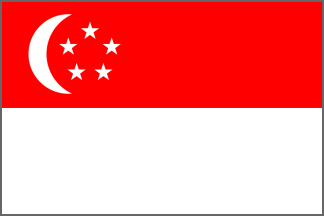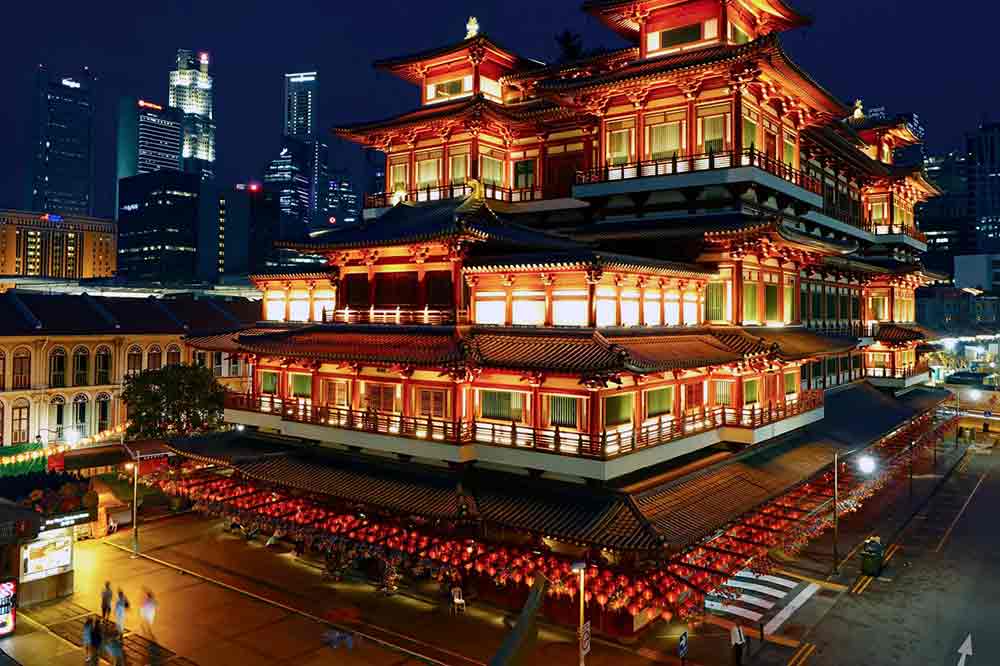Singapore Travel Guide
Geography of Singapore
The island of Singapore is located off the southern tip of the Malay Peninsula. It is separated from the mainland by the Johor Strait, which is about 0.8 miles (1 km) wide.
Singapore consists of 63 islands, but most are very small in area. By far the largest, the main island (Singapore Island) has an area of 277 square miles (718 square km). The area of Singapore has increased significantly since 1965, when dredging added more land to the island and even combined two or more smaller islands into a more practical larger island.
The Singapore River is the primary waterway, but the island also has inlets, streams, and lakes. About 10 percent of the total land has been designated as parks and natural preserve. The island’s highest point is Bukit Timah, a hill that is 538 feet (164 meters) tall.
Major Holidays in Singapore
The Ministry of Manpower issues an annual list of when the public holidays will be celebrated. There are officially 11 public holidays in Singapore. As the nation is a mixture of Buddhist, Christian, and Muslim, holidays from all three faiths are included in the calendar.
They are:
New Year’s Day (January 1): This holiday is celebrated much like elsewhere.
Chinese New Year (mid-January to mid-February): A floating holiday based on the lunar calendar. This is a very important holiday for the Chinese population of Singapore.
Good Friday (the Friday before Easter): This Christian holiday marks the day that Christ ascended to heaven.
International Labor Day (May 1): This holiday honors the labor force of Singapore.
Vesak Day (April or May): A floating holiday, based on the lunar calendar, celebrating the birth of the Buddha.
Hari Raya Puasa (usually in July): This floating holiday, also known as Eid-al-Fitr, is an important holiday to Muslims and marks the end of the fasting for Ramadan.
National Day (August 9): On this day, Singapore celebrates the day in 1965 that the nation became independent. Usually every decade, the president will extend the holiday to three days, as he did to mark the 50th anniversary in 2015.
Hari Raya Haji (usually in September): This holiday honors the willingness of Abraham to sacrifice his son, Ishmael, after receiving the command from God to do so. Of course, God sent the angel Gabriel to intervene and the boy was spared.
Deepavali (mid-October to mid-November): This Hindu festival marks the spiritual victory of light over darkness. It is held on the evening of the new moon during the Hindi month of Kartika.
Christmas Day (December 25): The Christian holiday celebrating Christ’s birth.
Visa Requirements for Thailand
All visitors to Singapore must pass through immigration upon arrival. Citizens/nationals of the Unites States, Canada, the United Kingdom, and almost all of Western Europe, Australia, and many other nations do not need to get a visa prior to their visit.
For a list of nations from which Singapore does require a visa, please check the official website of the Immigration and Checkpoints Authority.
When you go through the immigration line, the officer will stamp your passport and indicate the length of time you are permitted to stay (usually either 30 or 60 days). Be sure to take note and make sure you exit before the end of your permitted stay. Singapore takes visa overstays seriously.
Your passport must still have at least six months of validity remaining and you may be asked to show a confirmed onward/return flight ticket.
Please note that while in Singapore on a tourist permit, you are not permitted to take part in any type of paid employment or business transactions.
Traveling to Singapore
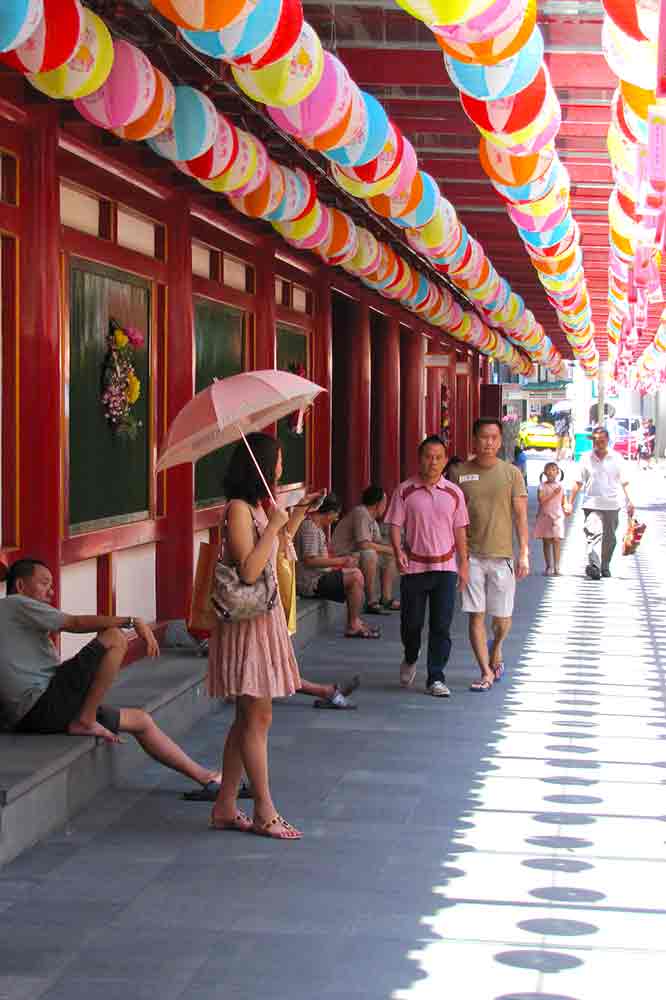
Singapore is a vibrant and ever-changing nation. There are many things for the traveler to enjoy, from cultural experiences to shopping to dining, there is always something fun to do in Singapore!
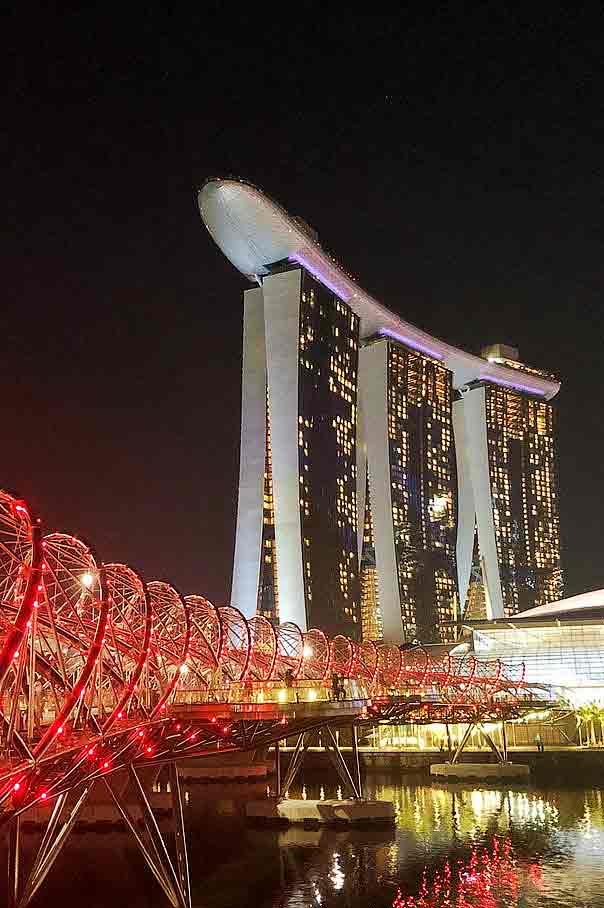
It is quite easy to fly to Singapore, either from a location in Southeast Asia or from many other parts of the world. The island is a major regional air hub, and the impressive Changi Airport is considered by many to be one of the finest in the world.
Flight times to Singapore, for example, are 19 hours from New York nonstop, or 21 hours with a stop, and about 13 hours from London. July and August, Christmastime, and the Lunar New Year are the most expensive months to fly to Singapore.
Singapore Airlines, the national carrier, is of very high quality and service is usually excellent.
However, many international airlines offer flights to Singapore.
If you’re transiting through the Singapore airport, and have at least five hours available, you can take a two-hour tour of the city.
Budget accommodations are not abundant in Singapore. Most hotels are in the medium to high end as far as price is concerned. It’s best to check with a hotel booking service while in Singapore.
Things to Do in Singapore
There are many interesting things to do in Singapore that will appeal to your interests. Following is a suggested itinerary to get you started.
Begin by getting an overview of the island from the Singapore Flyer, which is currently the world’s second tallest Ferris wheel, with Las Vegas’ High Roller sitting at number 1.
Located at Marina Bay, the Flyer is 540 feet (165 meters) tall. You can enjoy the panoramic views that Singapore has to offer. Operating hours are daily 8:30am to 10:30 pm with final ticket sales at 10:00pm.
To avoid scams, purchase your ticket only at the ticket counter at the attraction or from their official website, where you can also get more information.
To get a great introduction to Singapore’s culture and history, be sure to visit the interesting and educational Chinatown Heritage Center. It’s a very well-done museum depicting life in Singapore’s years as a Chinese port city. You can see reconstructions of the living quarters of the early residents of the city. For more information, visit their website here.
If you like shopping, you will be in your glory on Orchard Road, where the entire street is filled with luxury shopping centers.
It’s often called the Fifth Avenue of Singapore. There is also a wide selection of swanky restaurants and coffee shops here.
To get close to nature, be sure to check out the Singapore Botanic Gardens, and especially the National Orchid Garden, located within the Botanic Gardens. The gardens are over 125 acres (52 hectares) of beautifully landscaped paths through the island’s last remaining woodlands. The orchid garden houses the largest orchid collection in the world.
The gardens offer free guided tours on Saturdays. You can visit their website for more information.
One of the most popular things to do in Singapore is the famous Night Safari, at which you can explore a park highlighting the fascinating nocturnal wildlife on the island. The excellent Singapore Zoo is just next door to the safari park.
After a full day of experiencing some of the wonderful things to do in Singapore, you can relax with a nice meal or drink at Clarke Quay, a riverside entertainment and dining area that sits in a historical part of the island, on the Singapore River.
Precautions When Traveling in Singapore
Singapore is especially strict on what you are permitted to bring into the country and imposes stiff fines on violators, even if unintentional.
There are even prohibitions on bringing chewing gum in. (You will notice how clean Singapore’s sidewalks are.)
It is highly recommended that you familiarize yourself with the list of prohibited items by checking the Singapore Customs Webpage here.
In Singapore, cars drive on the left. Always be very careful when crossing streets if you are from a nation where you drive on the right. Habit will have you look left first, then right. It’s the other way around in Singapore. Be sure to look right then left.
Singaporean Food
Singapore food is so varied and vast that you could spend months on the island and not eat the same thing twice. This is due primarily to the ethnic diversity of the nation.
The dishes are influenced by Malay, Chinese, Indian, Indonesian, and Western cuisines. One of the best places to try some authentic fare is at the hawker stalls. Here, the food is clearly on display and you can easily just point to whatever and want to order. The hawkers will fill your plate and the prices are quite reasonable.
In CNN International’s “World’s 50 Most Delicious Foods,” two of Singapore’s signature dishes made it onto the list for 2020.
Starter Menu
Here are some Singaporean dishes for you to try:
Hainanese Chicken with Rice: This dish is considered to be one of the national dishes of Singapore. It’s one of two dishes from Singapore that made CNN’s list. The chicken is boiled for a long time in pork and chicken stock, then sliced and served over moist rice. This dish is an adaptation from the early Chinese immigrants originally from the Hainan province in the south of China.
Char Kway Teow (Stir-fried rice cake noodles): This dish is made with flat rice noodles stir fried with soy sauce, tamarind sauce, shrimp paste, bean sprouts, and Chinese chives. It has a rich taste and is quite distinctive.
Chili Crab: Another signature dish is chili crab, and the second dish to land on CNN’s list. It is made with crab cooked in a sweet and savory sauce created with chili and tomatoes.
Garlic and rice vinegar are added, and egg whites are whipped into the sauce at the end of the cooking process, giving it a fluffy texture.
Roti Prata: This is a very popular Indian dish that is often eaten for breakfast or as a late-night snack. It is flat bread served with curry and sugar. There are many other items that can be served with this dish, including egg, cheese, and even chocolate!
Tandoori: A traditional Indian dish consisting of chicken cooked in an assortment of spices and yoghurt in a clay oven.
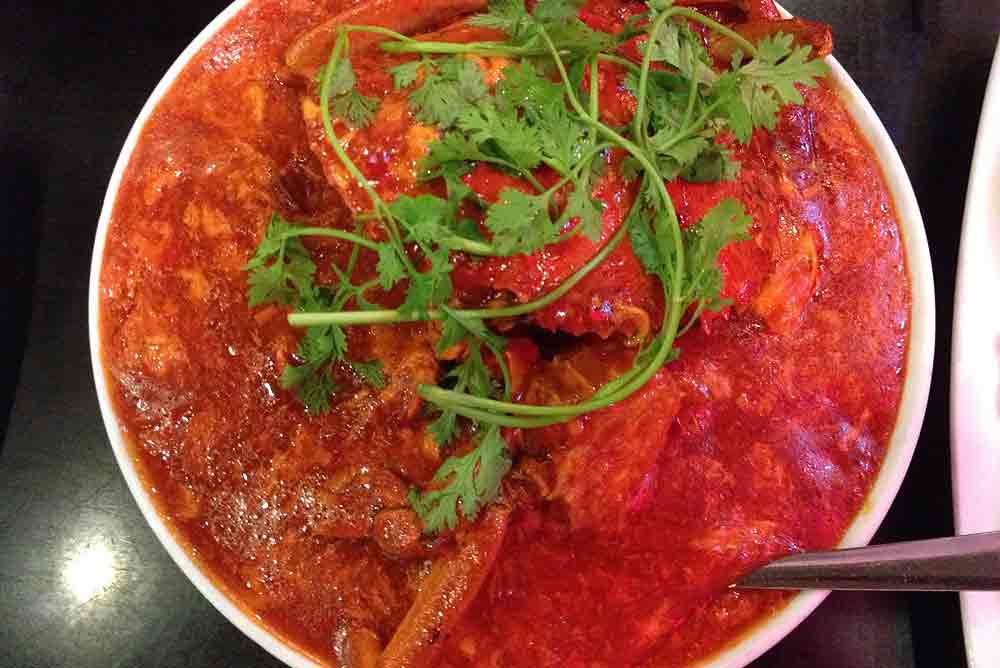
A bowl of delectable chili crab, a favorite in Singapore
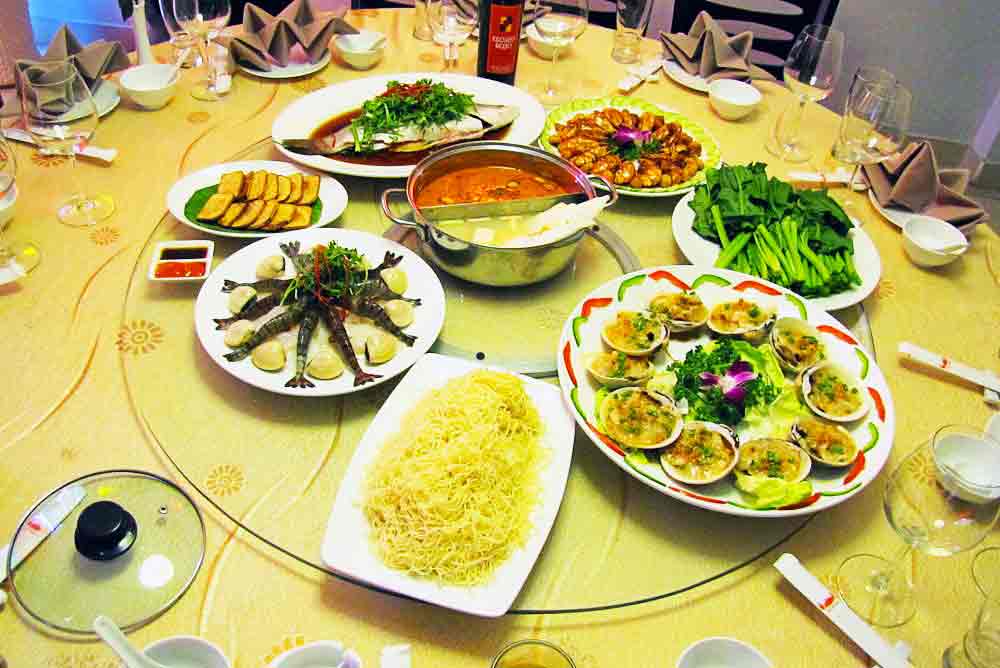
An assortment of the traditional food of Singapore
Singapore Weather
Singapore has a tropical climate. It has no distinctive seasons per say, however, temperatures and rainfall amounts are variable throughout the year. There are no distinct wet and dry seasons as there are in other Southeast Asian nations.
Temperatures typically range from 71 to 96°F (22 to 36°C), although it is somewhat cooler in December and January, whereas April and May are the hottest months.
Singapore receives about 90 inches (2,286mm) a year of rainfall, with more frequent rain coming from November to January, due primarily to monsoons.

